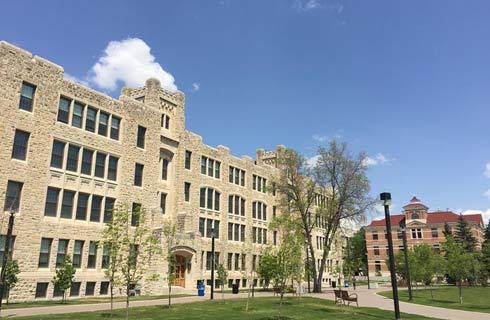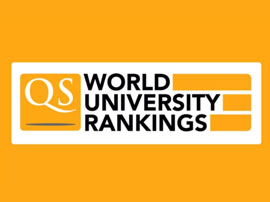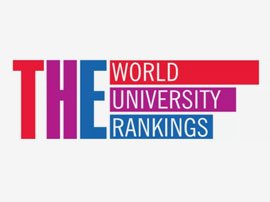国际学生入学条件
There are two major requirements in order to be admitted to the NAMA program:
An undergraduate degree: this can be in any field of study, and should be awarded by the start date of the NAMA program.
Previous experience or studies in their own native language as a second language or being a native speaker of a native language. The majority of NAMA applicants are non-traditional students who come from diverse educational backgrounds and life experiences. As such, there is no ideal age limit: many students who wish to undertake our program have already had careers in other areas. We encourage older students to apply.
GPA Requirement
Prospective applicants must have a 3.0 or higher GPA in order to qualify for admission.
Statement of Intent - Applicants must submit a concise statement of intent demonstrating their academic goals, career goals, and why a graduate degree in linguistics would help him/her pursue these goals.
Writing Sample - Applicants must provide a writing sample to demonstrate their level and proficiency of writing.
Standardized Tests - The GRE is recommended, but not required to the MA in Native American Languages and Linguistics Program.
English Proficiency
English proficiency is one of the requirements for admission for all applicants whose native language is not English. Applicants must submit a minimum TOEFL (Test of English as a Foreign Language) score of 550 on the paper-based test (PB), 79 on the internet-based test (iBT), or a IELTS (International English Language Testing System) composite score of 7 (no subject area below a score of 6). International students seeking graduate teaching assistantships must attain the minimum TOEFL or IELTS score listed above, and in addition must attain a score of 26 or higher on the speak portion of the TOEFL IBT.
Letters of Recommendation - Applicants must submit three letters of recommendation from letter writers who know the student’s work, specifically assessing student’s ability to carry out graduate work in linguistics. Applicants are encouraged to submit letters of recommendation from professors who are familiar with the applicant's recent academic work.
Required test(s):
GRE is recommended, but not required by the department for admission.
For International Students Only,
Minimum TOEFL: 79 iBT (or 550 on the paper-based test)
Minimum IELTS: minimum composite score of 7, with no subject area below a 6.
展开
IDP—雅思考试联合主办方

雅思考试总分
7.0
了解更多
雅思考试指南
- 雅思总分:7
- 托福网考总分:79
- 托福笔试总分:550
- 其他语言考试:Pearson PTE Academic (link is external) - minimum score of 60
CRICOS代码:
申请截止日期: 请与IDP顾问联系以获取详细信息。
课程简介
The NAMA program is designed to be completed in as little as 15 months, and begins as a summer admit program: during the first summer session the student completes coursework in the AILDI. Here they focus on language materials development, working with language archives, teaching methods, and other relevant Native American language and linguistics topics.<br>In the fall and spring semesters, the student enrolls in the core course of the program, Workshop on Descriptive Linguistics, LING 597A for 4 credits each semester. The Workshop courses consist of lectures and laboratory work on indigenous languages, particularly the student's heritage language, and provides the opportunity to interact with other students in both the NAMA program, but also Anthropology and American Indian Studies.<br>The Native American Languages & Linguistics M.A. (NAMA) is oriented toward community language activists who wish to train in the kinds of skills and experience needed to work on maintaining, revitalizing, and documenting their native languages.<br>Students interested in NAMA can either be speakers or second language learners of their language or ones who have studied a particular Native American language and have close contact with that language community. The specialized nature of this degree focuses on indigenous languages and meeting the needs of Native American communities due to the rapid decline in the use of heritage languages, tribal communities have pressed for practical linguistic training to:<br>Revitalize, maintain, and document indigenous languages,<br>provide skills and expertise for Native American linguists to develop teaching grammar and other educational materials,<br>promote understanding of indigenous peoples' educational issues at every level of policy-making,<br>enhance and promote understanding of complex factors leading to language choice, language shift and language loss, and,<br>work with archival media (such as audio legacy audio recordings and historical documents) to enrich the language record and to produce viable teaching materials.
展开







 预科
预科 奖学金
奖学金 实习机会
实习机会 在校学习
在校学习 跨境学习
跨境学习 校园授课-线上开始
校园授课-线上开始 在线/远程学习
在线/远程学习














 加州大学戴维斯分校
加州大学戴维斯分校

 亚利桑那大学
亚利桑那大学

 加州大学戴维斯分校
加州大学戴维斯分校

 加州大学戴维斯分校
加州大学戴维斯分校

 加州大学戴维斯分校
加州大学戴维斯分校

 斯坦福大学
斯坦福大学

























